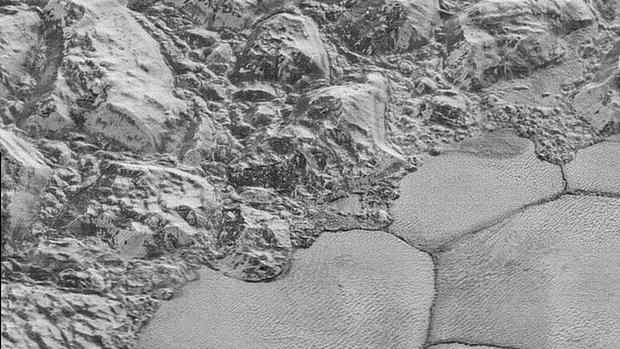Second mountain range discovered in Pluto's heart
We keep learning more about Pluto's rocky heart.
NASA's New Horizons mission discovered a second mountain range situated on the lower-left edge of Pluto's best-known feature, the bright, heart-shaped region named Tombaugh Regio (Tombaugh Region).
The newly discovered frozen peaks are situated between icy plains and dark, heavily cratered terrain. They are estimated to be one-half mile to one mile high, about the same height as the Appalachian Mountains.
It is the second range discovered by the mission.
Last week, New Horizons found Norgay Montes (Norgay Mountains), located about 68 miles southeast from the new range. Norgay is a bit taller, closer to the height of the Rocky Mountains.
The new image shows the well-defined topography along the western edge of Tombaugh Regio. The region was named after Clyde Tombaugh who discovered Pluto in 1930.
"There is a pronounced difference in texture between the younger, frozen plains to the east and the dark, heavily-cratered terrain to the west," said Jeff Moore, leader of the New Horizons Geology, Geophysics and Imaging Team at NASA's Ames Research Center in Moffett Field, California. "There's a complex interaction going on between the bright and the dark materials that we're still trying to understand."
While Sputnik Planum is believed to be relatively young in geological terms - perhaps less than 100 million years old - the darker region probably dates back billions of years. The sediment-like material appears to be filling in old craters as can be seen from the bright circular feature to the lower left of center of the image.
This image was taken by the Long Range Reconnaissance Imager (LORRI) on July 14 from a distance of 48,000 miles and sent back to Earth on July 20. Features as small as a half-mile across are visible.

